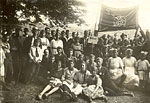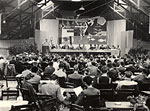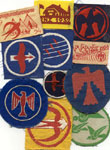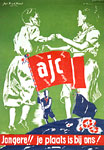Arbeiders Jeugd Centrale (AJC)
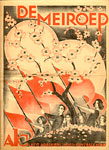 In July 2003 the inventory of the archive of the Arbeiders Jeugd Centrale, AJC (Dutch Social-democratic Youth Organisation) has become publicly available. The arrangement of the collection, gathered by the Stichting Onderzoek AJC (AJC Research Foundation), is now complete. The inventory is published as IISH Working Paper 45 and available online on our site.
In July 2003 the inventory of the archive of the Arbeiders Jeugd Centrale, AJC (Dutch Social-democratic Youth Organisation) has become publicly available. The arrangement of the collection, gathered by the Stichting Onderzoek AJC (AJC Research Foundation), is now complete. The inventory is published as IISH Working Paper 45 and available online on our site.
The foundation of the AJC on 18 March 1918 by the Komitee voor Jeugdontwikkeling (Committee for Youth Development) was an joint initiative of the SDAP (Social-democratic Labour Party) and the NVV (Netherlands Union of Trade Unions), party and union. The main aim was to educate and develop the labour youth. The AJC was the successor of the social-democratic Jongelieden Organisaties.
The AJC strove to promote the socialist cultural ideal among its members. They developed characteristic manners - alcohol and tobacco were not allowed - and their own way of clothing and celebrating. Physical exercises and long walks were part of it, as well as singing and dancing. AJC members camped on their own grounds, such as the Paasheuvel in the woods of Vierhouten.
The AJC was also active in the political-cultural field. The socialist cultural ideal was promoted through activities such as folk dancing, music, songs, and mystery plays, which encouraged community values. Many public meetings, such as youth rallies and May 1 demonstrations, shaped a political spirit.
Enthusiastic youth leaders, mostly from teachers' circles, were the driving force for the activities. President Koos Vorrink was an especially powerful and inspiring figure. Not only was Vorrink a prominent Dutch social-democrat, he also played an important role in the international movement. Since the twenties the AJC had been in contact with socialist movements in neighbouring countries.
The AJC members were divided into the older Rode Wachters (Red Guards) and younger Rode Valken (Red Falcons) and Trekvogels (Birds of passage). These were further differentiated into hordes (hordes), troepen (troops), and stammen (tribes). After the Second World War the names Rode Valken and Trekvogels were replaced by Trekvogels and Zwaluwen (swallows). All the groups had their own symbols, rules, and meetings.
Following a period of expansion in the twenties, the AJC had to endure the crisis years of the thirties. The AJC concentrated on organising camps and work projects for the jobless youth. During wartime the AJC decided to disband, in contrast with the other members of the red family. As soon as the war was over, the group was immediately re-constituted, and grew quickly. The AJC strove for greater cooperation with other youth organisations. In the fifties the organisation began to lose members. At the last congress of the AJC, in, it was decided to disband the organisation. Some activities were continued by Jeugd- en Jongerencentrum Ruimte (Youth Centre Space).
Several pictures from the history of the AJC can be seen on this site. Other sound and image collections (photos, prints, posters, flags, and historical objects) can be found in our online catalogue. The inventory, which was completed with a grant from the Stichting Onderzoek AJC, is available from Aksant publishers or can be viewed on our site.




